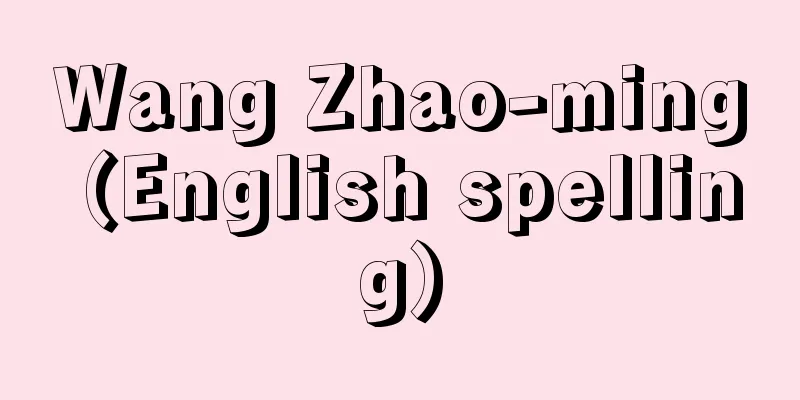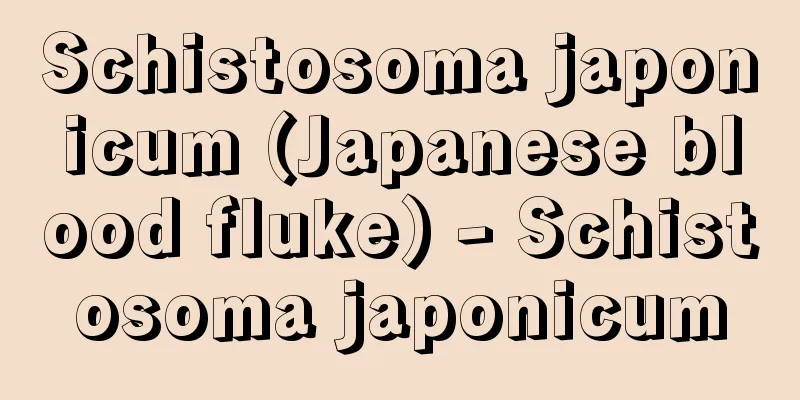Wang Zhao-ming (English spelling)

|
[Live] Guangxu 9 (1883).5.4. Guangdong, Panyu Died: November 10, 1944, Nagoya. Chinese politician and one of the leaders of the Chinese Nationalist Party. His pen name was Seiwei. While studying at Hosei University in Japan, he joined the Chinese Revolutionary Alliance, which included Sun Yat-sen. In 1911, he attempted to assassinate the Qing Dynasty regent Wang Zai-li, but failed. He was sentenced to death, but his talent was appreciated, and his death sentence was reduced by one level. He was released while in captivity when the Xinhai Revolution broke out. In 1912, he went to France to study literature and returned to China, but the following year, after the failure of the second revolution, he went to France again and returned to China in 1917. After the first Kuomintang-Communist Party coalition was established in 1923, he followed Sun Yat-sen as a radical nationalist, and led the left wing of the Kuomintang to actively promote the anti-imperialist movement. In 1924, he became a member of the Kuomintang Central Executive Committee, and after Sun Yat-sen's death in 1925, he became a leader of the Kuomintang along with Hu Hanmin and Liao Zhongkai, and served as the head of the propaganda department. After Chiang Kai-shek's anti-communist coup in 1927, he turned anti-communist and compromised with Chiang Kai-shek, but was held responsible for the Canton Commune incident and travelled to France again, returning to China in 1929. From then until 1931, he continued the anti-Chiang movement in alliance with anti-Chiang warlords, but when Chiang resigned, he compromised with the Nanjing government and became Premier in 1932. He left military affairs to the returned Chiang Kai-shek and shared political affairs, creating the so-called Chiang-Wang cooperation government, and in 1933 also served as Minister of Foreign Affairs. When the Sino-Japanese War broke out in 1937, he advocated compromise with Japan, and escaped from Chongqing in December 1938. He came to Japan in 1939 and continued working with the Japanese to establish a Wang government, and in 1940 he established the "Nationalist Government" in Nanjing and became its Chairman. In 1943, China signed an alliance treaty with Japan, but the Nanjing "Kuofu" government was a complete puppet government of Japan and had no support from the people. He died of an illness at Nagoya Imperial University Hospital in 1944. Source: Encyclopaedia Britannica Concise Encyclopedia About Encyclopaedia Britannica Concise Encyclopedia Information |
|
[生]光緒9(1883).5.4. 広東,番禺 [没]1944.11.10. 名古屋 中国の政治家,中国国民党指導者の一人。号は精衛。日本の法政大学に留学中,孫文らの中国革命同盟会に加入。宣統3 (1911) 年清朝の摂政王載 澧の暗殺を企てて失敗し,死刑の宣告を受けたが,その才を惜しまれ死一等を減じられて監禁中辛亥革命が起り,釈放。 1912年渡仏して文学を学び帰国するも,翌 13年第二革命失敗後再び渡仏し 17年帰国。 23年の第1次国共合作成立以後は急進的な民族主義者として孫文に従い,国民党左派を率いて反帝国主義運動を積極的に推進。 24年国民党中央執行委員となり,25年孫文の死後は胡漢民,廖仲 愷 (りょうちゅうがい) とともに国民党の指導者となり,宣伝部長をつとめた。 27年蒋介石の反共クーデター以後反共に転じ蒋介石と妥協したが,広東コミューン事件の責任を問われて再び渡仏し,29年帰国。それ以後 31年まで反蒋派軍閥と提携して反蒋運動を続けたが,蒋の辞職で南京政府と妥協し,32年行政院長に就任。復帰した蒋介石に軍事をまかせ,自分は政務を分担していわゆる蒋汪合作政権をつくり,33年外交部長を兼任。 37年日中戦争が起ると対日妥協を唱え,38年 12月重慶を脱出。 39年日本に来て日本側との間で汪政権樹立工作を続け,40年南京に「国民政府」を樹立し主席に就任。 43年日本と同盟条約を結んだが,南京「国府」は完全な日本の傀儡 (かいらい) 政権であり,民衆の支持はまったくなかった。 44年名古屋帝国大学病院で病死した。 出典 ブリタニカ国際大百科事典 小項目事典ブリタニカ国際大百科事典 小項目事典について 情報 |
>>: Theory of dynastic succession - Ouchōkōtairō
Recommend
Hanuszkiewicz, A. (English spelling) HanuszkiewiczA
...The spirit of boycotting all theaters that had...
Aspect ratio - aspect ratio
The aspect ratio of an aircraft wing. It is expres...
A caretaker at home
These gods are said to stay in their homes and vi...
Uraku style
This is one of the schools of tea ceremony founde...
Official Reagents - Kanpuushiyaku
...Although there are not many types, a group of ...
Kibi no Amabetsu no Atatai - Kibi no Amabetsu no Atatai
…Kibi submitted to the Yamato government early on...
Give me liberty, or give me death.
…He opposed the Currency Control Act and became f...
Club
…In Japan, Prince Shotoku is known to have gather...
Purification
…In China, the word sojiyo means to wipe away som...
Capillarisin - Capillarisin
...Also, Artemisia capillaris, Artemisia umbellat...
Brama japonica (English spelling)
...A marine fish of the family Pongoidae in the o...
Kumaralāta (English spelling)
...It was the last sect to split off from the Sār...
"Idaten reporter"
…He first worked as a journalist in Prague, and a...
Symphony - koukyoukyoku (English spelling) symphony English
A classical music term, it is a translation of th...
Castle town - Jokamachi
During the Sengoku period and after, these cities...









